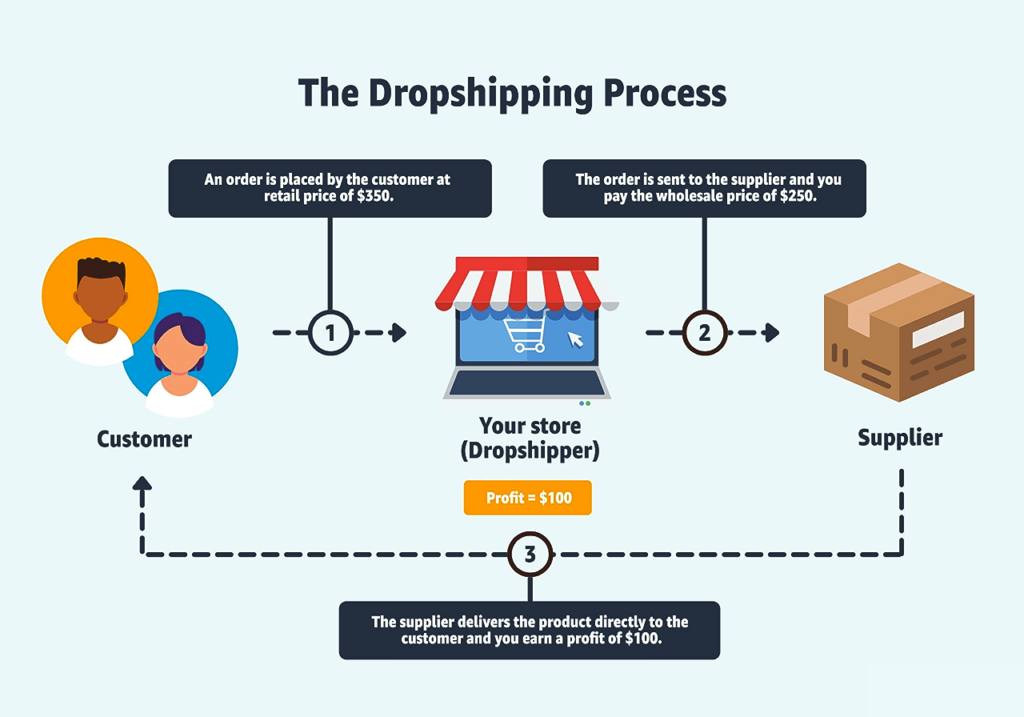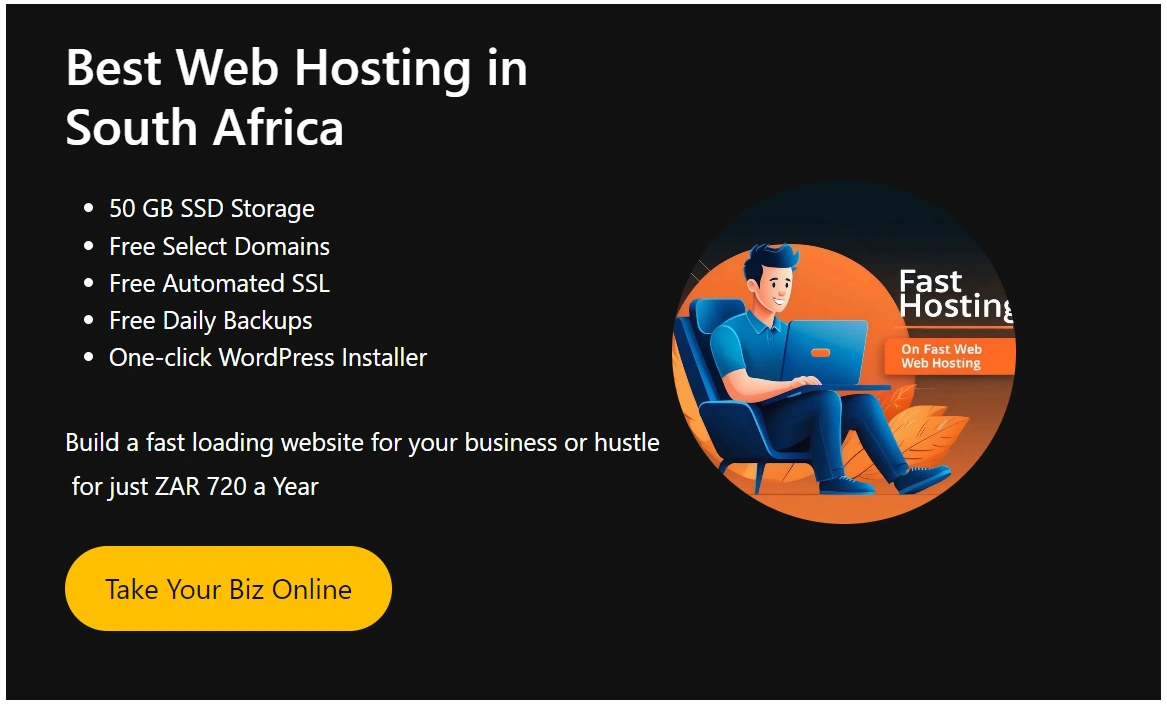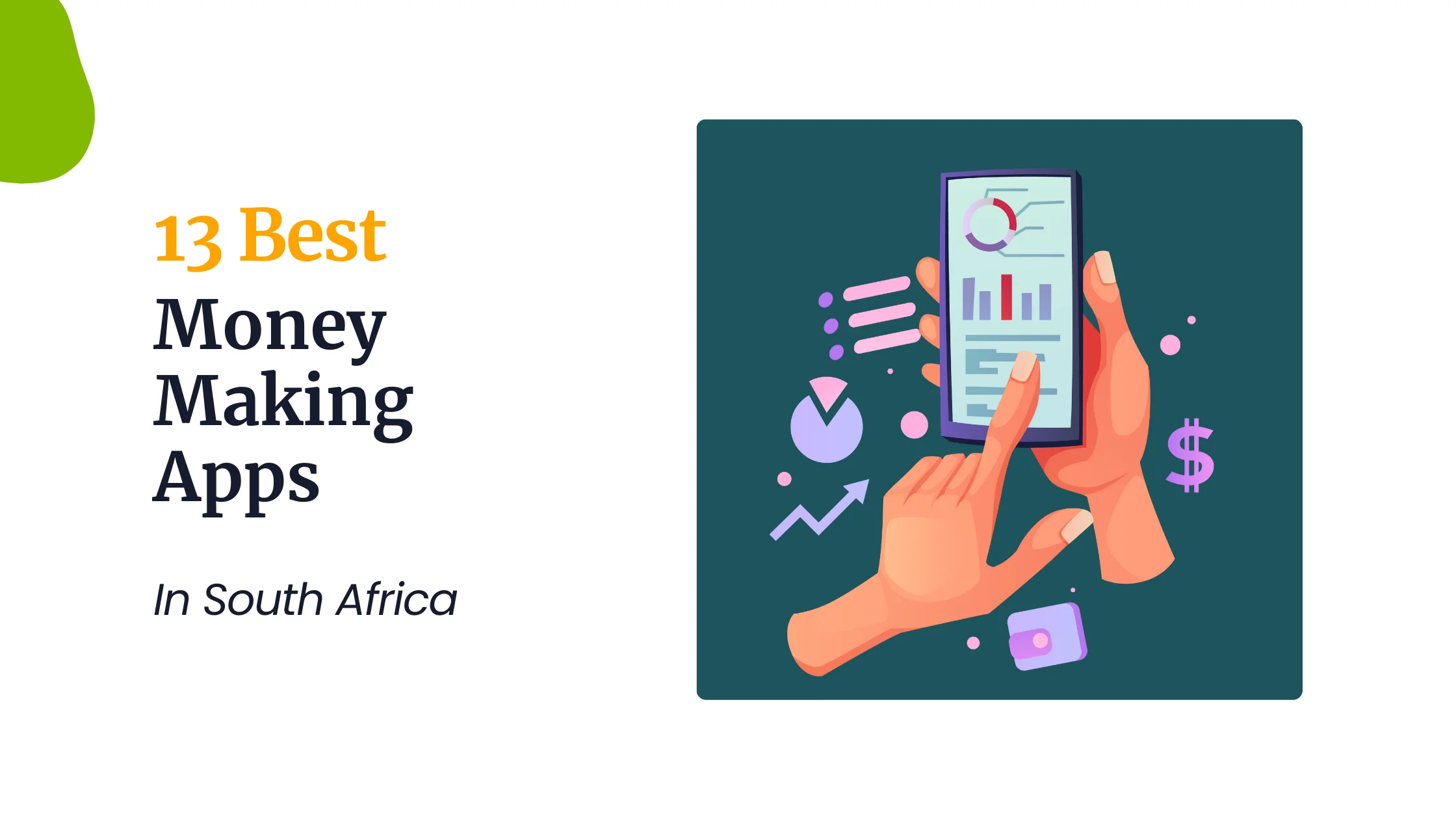Dropshipping is a retail business model that allows entrepreneurs to sell products without keeping inventory in South Africa.
Instead of purchasing a large quantity of products upfront, storing them, and shipping to customers when orders come in, dropshipping businesses partner with product suppliers or manufacturers to ship products directly to customers.

Here’s how dropshipping works in South Africa in basic steps:
- A dropshipping business sets up an online store and lists products from suppliers, usually at a markup
- When a customer places an order, the store owner purchases the item from the supplier
- The supplier then ships the product directly to the customer
- The dropshipping business keeps the profit margin between the retail and wholesale price
Benefits of dropshipping in South Africa include:
- Low startup costs – No need for a warehouse or large inventory
- Easy scalability – Add or remove products easily
- Flexibility – Switch suppliers or products based on demand
- Wide selection – Offer many products without overhead costs
Potential downsides to consider:
- Low margins – Limited control over pricing
- Quality control – Reliant on suppliers for good products and service
- Longer delivery – Addresses need to be transferred between parties
Table of Contents
Is dropshipping allowed in South Africa?
Dropshipping is generally allowed and legal in South Africa, however there are some important legal considerations, tax implications, and potential needs for permits or licenses to keep in mind.
Legal Considerations
South Africa’s Consumer Protection Act (CPA) contains several provisions relevant to dropshipping businesses:
- Informed consent – The CPA prohibits unfair, unreasonable or unjust contract terms. Dropshippers must clearly disclose shipping times and policies to customers beforehand.
- Quality and safety – Products sold must be of good quality and safe to use. Dropshipping businesses are responsible for checking supplier standards.
- Return policies – Consumers have the right to safe, prompt return and refund processes. Dropshipping companies must facilitate returns even when suppliers are abroad.
Additionally, dropshippers in South Africa must comply with:
- The Electronic Communications and Transactions (ECT) Act for any online selling
- National Credit Act (NCA) provisions around laybys and payment plans
- Financial Intelligence Centre Act (FICA) for customer identification and transaction monitoring to prevent money laundering activities
Tax Implications
While dropshipping income is taxable in South Africa, structure choices can impact how businesses and VAT registrations operate:
- Sole proprietors – Seen as informal traders, required to register for income tax
- Companies & close corporations – Separate legal entities that can register for VAT and deduct input VAT
- Foreign suppliers – Cannot charge VAT to SA customers unless they register as VAT vendors locally
Keeping detailed financial records is essential for accurate tax filing.
Permits & Licenses
Specific permits and licenses are not mandated for dropshipping itself according to South African law, but individual product types may require special permissions – particularly imported, regulated goods like food, cosmetics, chemicals or pharmaceuticals.
The Department of Health, Department of Agriculture, and standards bodies should be consulted before importing and selling products subject to specific South African regulations.
Customs procedures, duties and quotas may also apply at ports of entry depending on products.
Sourcing Dropshipping Suppliers and Products in South Africa
Finding reliable, high-quality suppliers and profitable products is crucial for running a successful dropshipping business.
When sourcing suppliers in South Africa, focus on manufacturers and wholesalers that:
- Offer reliable shipping timelines (1-7 days to customers)
- Have positive reviews for service quality
- Provide detailed product descriptions and images
- Maintain sufficient inventory levels
- Offer wholesale discounted pricing with room for markup
Ideally, choose suppliers located in the same country as your target customers – in this case South Africa.
This minimizes shipping times, reduces chances of lost parcels, and may decrease import taxes.
Types of products that tend to work well with dropshipping in South Africa include:
- Small, lightweight goods – cheaper shipping costs
- Generic products – easier to source substitutes
- Consumables with recurring purchases
- Trending items
- Customizable products – appeals to wide customer bases
Niche selection is also key.
Consider targeting niche markets of passionate, loyal customers versus extremely broad markets.
Analyze search volume and competition levels before committing to a product segment.
Some hot dropshipping niches in South Africa include:
- Beauty, cosmetics & skin care
- Baby products
- Pet supplies
- Health foods & nutritional supplements
- Homeware & small appliances
- Arts, crafts & stationery supplies
Continuously test new products by ordering samples yourself and getting customer feedback.
This reduces listing items that underperform in quality or demand.
Building an Online Dropshipping Store in South Africa
An appealing, user-friendly online store is essential for succeeding in ecommerce dropshipping.
Some key steps for setting up an effective dropshipping store include:
Choosing Ecommerce Platforms
Popular platforms like OLITT, Shopify, WooCommerce, Magento, PrestaShop and Squarespace offer easy template-based store building, convenient payment and shipping integrations, and add-on app ecosystems.
Features to evaluate when choosing platforms:
- Template options and customizability
- Built-in payment gateways
- Shipping and tax rate configuration
- Discount, coupon and loyalty capabilities
- Inventory and order management features
- Reporting and analytics
- Scalability for growth
Shopify and WooCommerce (for WordPress sites) are among the most widely used in South Africa for flexibility and third-party integrations.
Site Design and Setup
Store layout, visual branding and written copy all impact conversions. Best practices include:
- Visually appealing themes – Align imagery, fonts and colors
- Clear navigation menus – Layer categories for simplicity
- Prominent calls-to-action – Many add-to-cart and checkout buttons
- Quality product photos – Images boost confidence and purchases
- Product descriptions – Details like materials, sizes and sourcing help inform customers
- Customer testimonials – Build credibility and trust
Also optimize technical elements like site speed, security certificates, SEO metadata and responsive mobile designs.
Integrations and Apps
Additional integrations improve the functionality:
- Payment gateways – Authorize, Masterpass or DPO PayGate for accepting payments
- Email marketers – Mailchimp, SendinBlue, ActiveCampaign to manage email lists and campaigns
- Accounting software – Xero, QuickBooks to handle taxes, billing and other finances
- Fulfillment apps – Deliverr, Catch for suppliers to update inventory counts
- Referral programs – Reward customers for sharing your store
The right combination of platform, design and tools can quickly get an effective dropshipping operation online to reach South African shoppers.
Continual split testing and optimization is key after launch as well.
Marketing and Driving Traffic
Marketing is indispensable for generating awareness and sales of dropshipping stores in South Africa.
Some effective strategies include:
Content Marketing
Informative blogs, FAQs, guides, email newsletters, and other content provides value to attract and convert visitors.
Great content also boosts SEO rankings so more people discover stores via search engines.
Useful topics aligning with products include:
- Product benefits, tutorials and comparisons
- Relevant industry insights and trends
- Answers to common customer questions/concerns
Tools like SEMrush, Ahrefs and Moz provide keyword research for creating targeted content.
Social Media Marketing
Build engaged social media audiences through value-driven content and conversations.
Visual platforms like Instagram and Pinterest showcase products attractively.
Strategic paid promotions can profitably reach more potential customers. Market to users tagged with related interests and lifestyles for the most relevant audiences.
Influencer Marketing
Leveraging influencers or bloggers with established audiences allows dropshipping stores to tap into their follower bases more rapidly.
Offer free products, affiliate commissions, or other incentives in exchange for product features and reviews across their social platforms.
Micro-influencers in specific niches can be very effective partners.
Paid Ads
Paid advertising like Google Shopping campaigns, Facebook/Instagram product catalog ads, and search retargeting also supplement organic traffic sources.
Advanced tracking and analytics inform budget allocation across best-performing platforms and product promotions.
Balance CPC and conversion performance to scale.
Managing Orders and Logistics
Seamless order, inventory, and shipping management must run efficiently behind the scenes to deliver good customer buying experiences:
Workflow
- Customer places order
- Order receipt triggers payment capture plus the product purchase from supplier
- Supplier ships directly to customer
- Delivery confirmations update order status
- Customers notified of shipping/tracking updates
Quality Control
Verify ordered items match product listings before shipping.
Conduct test buys to spot issues like incorrect sizes, materials, or packaging before customers get to purchase.
Shipping and Delivery
Set realistic shipping timelines on store policies and product pages.
Lower costs by consolidating supplier warehouses closest to the market.
Offer customer updates for every step.
Managing relations with suppliers and customers, coordinating logistics, ensuring accuracy and meeting delivery expectations all enable excellent service to foster loyalty and organic word-of-mouth promotions.
Tips for Dropshipping Success in South Africa
Running scalable, thriving dropshipping operations in South Africa boils down to a few key guidelines:
Start Small
Test product viability, optimize conversions and establish supplier relationships before attempting to scale up. Manage capacity at sustainable volumes.
Focus on Customers
Deliver outstanding service, transparency around policies, prompt responses and fair solutions to build lasting trust and retention. Their referrals and reviews make the best marketing!
Build Supplier Relationships
Collaborate for favorable terms and wholesale pricing.
Support reliable suppliers so they support store growth in return with prioritized order fulfillments, customized products and other valuable assistance.
Choose suppliers carefully, design sites for conversions, follow marketing best practices, fulfill accuracy and care – but always put delighted customers at the center.
Their long-lasting support liberates dropshipping entrepreneurs to continually expand and enrich their online businesses.
Key Takeaways
- Dropshipping in South Africa enables easy entrance into ecommerce without major upfront inventory investments
- Follow South African regulations like the CPA and manage taxes appropriately
- Source reliable suppliers and profitable products in targeted niche markets
- Setup user-friendly online stores with the right platform, design and tools
- Market consistently with various organic and paid channels
- Coordinate order management and shipping processes closely with suppliers
- Focus on customer satisfaction above all else
Read also:
 Web Hosting
Web Hosting Windows HostingBuilt for Windows apps and websites – stability, speed and flexibility
Windows HostingBuilt for Windows apps and websites – stability, speed and flexibility Reseller HostingLaunch a hosting business without technical skills or expensive infrastructure
Reseller HostingLaunch a hosting business without technical skills or expensive infrastructure Affiliate ProgramRefer customers and earn commissions from sales across our platform
Affiliate ProgramRefer customers and earn commissions from sales across our platform Domain SearchFind and secure a domain name in seconds with our quick lookup tool
Domain SearchFind and secure a domain name in seconds with our quick lookup tool CO ZA Domains
CO ZA Domains All DomainsExplore domain names from over 324 TLDs globally – all in one place
All DomainsExplore domain names from over 324 TLDs globally – all in one place Whois
Whois VPS
VPS SSLs
SSLs








